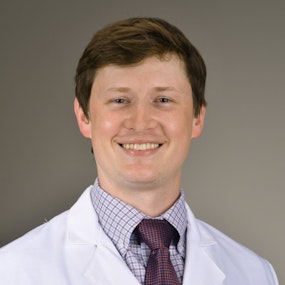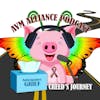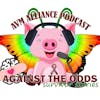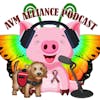SE 2: Episode 2: The Doctor is IN: Medical Terms, Epilepsy & Pediatric Stroke
On this episode, we continue our interview with the director of the pediatric stroke program with McGovern Medical School at UTHealth Houston as we go over questions parents submitted for our medical professional. Today’s episode continues the discussion, diving a bit into epilepsy, EEG’s and stroke in infants. Each episode for this season ends with a focus on a special children’s book with a "Things to Think About” takeaway lesson. The focus of this month's "Things to Think About" is based on the Children's Book “The Boy, The Mole the Fox and the Horse” a fabulous book of wisdom written by Charlie Mackesy.
On this episode, we continue our interview with the director of the pediatric stroke program with McGovern Medical School at UTHealth Houston as we go over questions parents submitted for our medical professional. Today’s episode continues the discussion, diving a bit into epilepsy, EEG’s and stroke in infants. Each episode for this season ends with a focus on a special children’s book with a "Things to Think About” takeaway lesson. The focus of this month's "Things to Think About" is based on the Children's Book “The Boy, The Mole the Fox and the Horse” a fabulous book of wisdom written by Charlie Mackesy.
Our FB Page: https://www.facebook.com/AVMAlliance
Our FB Group: https://www.facebook.com/groups/325321586185434
Instagram: https://www.instagram.com/avmalliance/
Webpage: : https://www.avmalliance.org
Twitter: https://twitter.com/avmawareness
YouTube: https://www.youtube.com/@avmawareness
Personal Blog: https://www.caringbridge.org/visit/kylerlewis
TIKTOK: https://www.tiktok.com/@avmsurvivor
Raylene Lewis:
Hi there, and thank you for joining us on AVM Alliance, a pediatric podcast for families and friends whose lives have been affected by traumatic brain injury, rare disease, brain disorders, or stroke. The purpose of this podcast is to focus on the kids' side of brain injury. With honest talk news, information, and discussion for our community, being a parent of a medically complex child is an extremely difficult path to suddenly find yourself on. I'm Raylene Lewis and my son Kyler suffered a hemorrhagic stroke at age 15. Thank you for joining us. First thing, I wanna let everyone know that AVM Alliance, an official 5 0 1 C three charity organization now has its own website, www.avmalliance.org. On it, you will find lots of information as well as personal stories. We are also super excited to announce that you can now find the link to One Mind-Full Mama under our for Parents Helpful Organizations section, and if you haven't seen her content yet, we highly recommend that you check her out. Additionally, we are working hard to provide information that people want to know more about. So if you see something missing from the website or have any questions for us, we do now offer a live chat button at the bottom right of the website. Don't hesitate to reach out. We are continuing today with part two of our, The Doctor Is In series going over questions. Parents submitted to this podcast for our medical professional last month's Part One episode focused on medical terms parents read on radiology reports and went into more detail about the different radiology tests doctor's order. Today's episode continues the discussion, diving a bit into epilepsy, EEGs, and stroke in infants. And next month we will end the series with questions about stem cells and other therapies and programs for kids who have suffered a stroke. As a reminder, each episode for this season will end with a focus on a special children's book with a things to think about, take away lesson. I am so excited to have the director of the Pediatric stroke Program with the McGovern Medical School at UT Health Houston. Dr. Frazier, thank you for joining us.
Dr. Stuart Fraser:
I really appreciate the invite.
Raylene Lewis:
All right. Before we move on, just a couple really quick things. Okay. So you can tell us what they are when parents read this on a report. Cerebral p a. R e n c h y m a. Okay. I dunno how to say
Dr. Stuart Fraser:
that's your brain. Parenchyma is the brain. So your brain tissue, the, the stuff that looks like sponges, that's parenchyma the brain. Okay? That's another why we use so many words for the same thing. I don't know, but yes, that, that's just brain tissue.
Raylene Lewis:
Brain tissue, okay. Mass effect.
Dr. Stuart Fraser:
Mass effects the effects of mass on something. So usually when I use that term, someone has a tumor or a bleed that is pushing on other parts of the brain. The brain has a very set position it likes to be in. When it is being pushed, we often call that mass effect and, and that can be a bad thing.
Raylene Lewis:
Okay. basilar cisterns?
Dr. Stuart Fraser:
That is the sort of base of the drainage system of the brain. We often look at it, I'm, I would guess on that report, someone said the basal or cisterns are open. That's usually a sign that the mass effect is not immediately an emergency. There's still space at the base of the brain. We, we like to talk about that a lot. Flare hyper. Flare Hyperintensity. So MRIs have a bunch of sequences we use for different things. It's all based on these systems of measurement worked out by very smart people in the seventies and eighties where you send magnetic pulses through stuff and whatever signal you get back from water molecules helps you sort of determine what you're looking at. Flare is a special sequence we use to try to look. For hyperintensities, hyperintensities usually for us points to something that is either temporarily injured or permanently injured. We, we often have to use the clinical context to figure out why. So for example, if a young man were to have swelling after gamma knife radiation, he would have flare hyperintensities for a while. I, I would tell you, I hope those flare hyperintensities go away. I'm not sure if they would. It points to dysfunction, maybe injury, and we don't know if it's permanent or temporary.
Raylene Lewis:
Okay. And mastoid effusion.
Dr. Stuart Fraser:
The mastoid air cells are near your ears. Mastoid. Effusions might mean you have a, you might have a little sinusitis or ear infection or something and you're getting a little swollen. That, that would commonly be it. There's a lot of other conditions that maybe the ear, nose, and throat up docs would know better than me.
Raylene Lewis:
Okay. And then foci of diffusion. F O C.
Dr. Stuart Fraser:
Ah, yes. Doctors, again, for whatever reason, like to talk about single isolated things or the center of something as a focus. And if there are a few, we'll call them foci. If you have a foci of restricted diffusion, that means there's an area in the brain where they're seen that water molecules aren't diffusing the way they expect. Same thing, that could be a temporary or permanent injured part of the brain. Sometimes you, you just have to wait and see if the diffusion restriction comes back normally.
Raylene Lewis:
Okay. Okay. And then obviously any midline shift is bad, but at what point does midline shift get really bad?
Dr. Stuart Fraser:
Well, it really depends on the clinical context. So there's these big landmark trials that in adult stroke have worked out where we said, oh, once it gets to a centimeter, You gotta operate, you have to relieve pressure. There are situations where maybe less than a centimeter you have to operate. There are situations where maybe slightly more you won't have to operate. Each person's probably different. The the reason we worry about midline shift is again, brain has to stay in sort of a very specific spot. If it starts getting pushed out of where it's supposed to be, it'll start pressing on unrelated blood vessels. And then you can start getting strokes. So the, the blood vessel is that. That would be caused by mass effect. Yeah. It would have to be, it has to be pretty extreme. For example, when I attend, I intend on the pediatric neurology service and also on the adult stroke service on, on the adult stroke service. We'll be doing those surgeries pretty often because a lot of adults will have big strokes and, and they'll need to have the pressure relieved. And kids, it's, it's much more rare and especially in babies. Babies have a little pop-off valve. It's called the fontanelle. So they, they very often won't need surgery, even in pretty, pretty big lesions with a lot of mass.
Raylene Lewis:
Okay. Okay. Here's a quick question that a, a parent had for kids who have had. Brain vessel disease early in life, like for diagnosed with a v m or some of these other malformations, do they have to worry about a higher risk of aneurysm later in life? Because the walls of those blood pressures were stretched so much previously with high blood flow.
Dr. Stuart Fraser:
So, not to my knowledge, but it would be very case dependent to be honest. You know, pediatric stroke as a field of systematic study has really only taken off in the past 20 years or so. It'd be hard to say.
Raylene Lewis:
One question that a parent had was the role of, and I don't know this word, I'm so sorry. Hemos d Hemos. Yes. And superficial cys, if it can prevent recovery. After stroke or cause lasting damage on nerves?
Dr. Stuart Fraser:
So that's a good question. I'll start by saying that I definitely understand worrying about that. Absolutely. This person is very intelligently asking is after there's a rupture, there tends to be this leftover iron. So when you have bleeding anywhere in the brain, the brain immediately starts trying to clean it up. That those free iron molecules and hemoglobin that is toxic to brain cells, they don't like it. And we know that from, from mouse studies, these cells will go out and start eating up all that iron and try to get rid of it as much as they can. But if you look at MRIs of people who have had a bleed or several bleeds there will be leftover iron molecules usually around the outside, but you could also get deposition in a bunch of places That's called superficial cirrhosis. We don't. Have great treatments to get rid of that stuff that I know of. What I usually tell parents is that, This is the scar left over. As far as I know, it's not getting in the way of anything else, and we just don't think about it. We just think about recovering from the stroke now.
Raylene Lewis:
All right. Let's switch gears for just a little bit and talk just really briefly about epilepsy. My first question out there which I think the answer is no, based on my experience, is that. Okay. Is there any way a parent looking at like a 20 minute e e g result that's being done in the hospital or can see or tell anything from, from reading that those papers, how do they read those papers?
Dr. Stuart Fraser:
Yeah, they have to train for a long time. So all neurologists should be trained a little bit how to read EEGs. Mostly they, they start us with the basics and the emergency stuff. And I gotta tell you, it was hard. The epileptologists, most academic centers have people that I. Focus specifically on difficult to control epilepsy, which means they read EEGs. Most of the time it takes them hours and hours and a couple extra years of training to get really good at it. What I usually tell parents when they ask me,'cause I've, I've had people staring at that thing and should I be staring at that? I, I tell them, don't let that bother you. Someone's looking at that. Look at the person that you love who's in the bed in front of you. And when you see something in that bed that you think is a seizure, let the epileptologist do the other part because you're, press that button you're good at, yeah, press that button. You're good at taking care of your child. Let us try to take care of the eeg.
Raylene Lewis:
Okay. And then just one more thing on the epilepsy side, a lot of parents epilepsy's super confusing and they don't know what to look for or how to tell if something is a seizure or what a seizure is out there. Do you have a site that you could recommend or some general advice for parents who have the concern?
Dr. Stuart Fraser:
American Epilepsy Society is, is a great place. I can certainly recommend checking out their, their parent information section. Seizures are, So there's the movies, which get it wrong. As you know, it's not shaking your whole body, you're not limp, your eyes don't close. They can present in a lot of different ways. So what it comes down to is a seizure is brain cells that are firing too fast and too much. Whichever brain cells are doing that are what causes your symptoms of your seizure. So if it's every brain cell at all at once, we call that a grand mal seizure and your whole body is stiff, your eyes are open. You might bite your tongue, you might wet your pants. Because every muscle in your body is being told by every brain cell in your body to move at once. If they're quote unquote focal, they're only coming from one area, then it starts getting complicated. There are seizures that might make you just look to the right. A second. Second and then come right back. There are seizures that might make you only move your hand. I've had people that have what we call partial status epilepticus, where the hand is seizing, but they can still talk to me. It's very, very complicated and that's why at least with me I do a lot of EEGs. If I'm not sure you, you can't live your whole life hooked up to an e e g. Seizures, we know get in the way of normal brain function. So if someone is doing something funny, especially If they can't remember it. That's usually a good sign that you should look. This might have been a seizure.
Raylene Lewis:
Okay. Okay, so let's move briefly to ischemic stroke in infant. Okay, sure. I had a couple of questions done there. One of the questions was, is there any indication the mother's placenta could have done something that is the cause of the stroke?
Dr. Stuart Fraser:
So the most common type of stroke. I take care of is a child who has a stroke right when they're born. And the most common of those types of, of strokes is the arterial ischemic stroke, what you're talking about, they're really common. If you take all strokes right at birth, it's one in 1100 babies. That's. That's really common is, is the most commonly quoted number and one in about 3000 or so will have that, that big blood clot that forms in the brain, that that will cause seizures and maybe weakness later in life as to where those blood clots are coming from. That is the question we still don't have an answer to. There's a lot of theories. I don't think any of them have been proven definitively. I personally think. Placental factors are probably very important in the pathogenesis, but I also wanna stress that it is not mom's fault in any way. If this does happen, it's not'cause there's something wrong with your placenta specifically, or something wrong with your body. It just. It just happens. And the vast majority of the time we never figure out a definite answer and we just end up having to blame what we always have been blaming it on for probably since these were first recognized as cerebral palsy in the 18 hundreds, they just happen. Being born is one of the most dangerous things any of us are ever gonna do. And, and that is one of the, the rough things that can happen with it.
Raylene Lewis:
So ethology is, Is finding out like how these things happen. Yeah. But there isn't like a set of standard tests is kind of what you're telling me that people typically do.
Dr. Stuart Fraser:
Oh, that's a good question. So there is a set of standard tests we do. So those, at, at least in the United States, I like to follow the American Heart Association release the scientific statements saying We think you should do these tests. We, we don't think you should do these other ones'cause. We, it's never been shown to have a connection. Generally, if you are thought to, if you're thought to have a stroke right at birth, you will get an m r I of the brain and an m r a of the brain. We're looking to confirm that it's a stroke and also to make sure the blood vessels don't look unusual and they almost always will look normal. The baby's had a stroke, but the blood vessels look totally fine because probably the stroke happened a while ago. And we're just seeing the after effects. You'll get a picture of the heart taken. Any baby who get has a stroke right at birth should have a picture of their heart taken. They're looking for abnormal formations of the heart. So congenital heart disease, we call it.
Raylene Lewis:
'cause it can create clots, right?
Dr. Stuart Fraser:
It can create clots, pumping. Okay. Yeah, exactly. So the one sort of cause of stroke at birth that we can do something about, or one of the few ones is if a baby is born with an abnormally shaped heart, they usually would need to immediately see an advanced cardiac team who would talk about surgery options and initiate cardiac care and that sort of thing. And then the last thing we do is, or the last couple of things is we will, we. Each baby where this happens should get an e, e G. It probably should be a long one right then there at birth. Usually because babies that have strokes don't have weakness on one side of the body right when they're born, that comes later. They usually have seizures. And they need to be treated because we wanna make sure that those ongoing seizures don't damage other parts of the brain. And they should get a few blood tests, but not a big expansive. This is very controversial and I think some people will disagree with me on this, but they shouldn't get a big expansive workup for every possible clotting disorder that exists. I. Because we've found over the years that we're not finding clotting disorders in these kids. Whatever is causing these strokes, it's usually not some inherited clotting issue that they got from mom or dad. It's something to do with being born.
Raylene Lewis:
Okay. And the last kind of thing along that realm is, of course, newly, within the last couple years we've had to deal with c Ovid 19. Mm-hmm. And so one of the questions that we had come up quite a few times is, has anybody. Had or known of any correlation to c Ovid 19 during pregnancy to have any relationship to stroke in a newborn.
Dr. Stuart Fraser:
So that's a really good question. Working with the lead author was, her name is Lauren Baslow. Dr. Baslow is in, in Philadelphia. She's a really talented doctor and scientist and she published a couple of papers that she worked with a lot of us on sharing our data. We were trying to find an association between covid and stroke and kids. And in a statist, we like to say statistically significant way, doing a bunch of statistics. Tests. Did we find a, an association between the two? The answer was no. There are a few cases though. Just because we didn't find a statistically significant association doesn't mean there may be some in extreme cases because there are children that I've run into who had C O V I D had a really bad response to it. In addition to being very sick, had a stroke in terms of mom getting covid right at birth and it causing strokes in babies. I can tell you because I do spend time in the adult side, in the, in the really rough years, we were seeing a lot of bad, very unexplained strokes. In young men and women who had covid and they were just clotting everywhere. We did our best to try to save what we could. I'm not really seeing that much anymore, and I haven't heard of anything about mom getting covid right before birth and it causing a problem. For baby. It doesn't mean there's not a case report out there or something like that, or someone might have had that experience, but definitely isn't a big thing that has popped up in the literature that I've seen.
Raylene Lewis:
Okay. No, I appreciate it. Thanks for explaining that. I know a lot of people, you know, have questions when it comes to covid and stroke'cause you hear about, you know, blood clots and everything else. And we will look forward to next month's episode where we will conclude our discussion with the director of the Pediatric Stroke Program with McGovern Medical School at UT Health Houston. The focus of this month's things to think about is based on the Children's book, the Boy the Mole, the fox and the horse. A fabulous book of wisdom by Charlie McKessie, published in 2019. It is a tale of friendship, self-discovery, and embracing life's challenges. The story follows the journey of four unlikely companions, a curious boy, an introspective mole, a wise fox, and a gentle horse as they embark on an enchanting adventure through the wilderness. Each character possesses unique qualities and perspectives, and together they navigate the ups and downs of life's challenges, offering comfort, support, and companionship to one another. One of the central themes of the book is the power of friendship, which transcends differences despite their diverse personalities and backgrounds. The Boy the Mole, the fox and the Horse Forge a deep Bond that teaches us the value of accepting and celebrating our friends for who they are. The characters often share their innermost thoughts and fears with each other, promoting a sense of vulnerability and emotional honesty. This is a reminder for us to open up about our own feelings, which will foster stronger connections with others. Throughout this story, the characters engage in meaningful conversations that lead to self-discovery and self-acceptance. Their interactions remind us that it is important to understand ourselves, acknowledge our strengths and weaknesses, and learn to be comfortable in our own skin. Life is full of challenges, and the character's journey throughout this book mirrors this reality. They face setbacks, doubts, and uncertainties, yet they find the inner strength to preserve. This serves as a reminder to all of us that even in tough times, we can find the resilience within ourselves to overcome obstacles. This book frequently emphasizes the beauty of living in the present moment. The character's relish the simple joys of life, which reminds us to be more mindful and appreciative of the world around us. The interaction between the characters are infused with kindness, compassion, and empathy. Their actions highlight the impact that even small acts of kindness can have on others. Their actions inspire us to spread positively and make a difference in our own lives and in the lives of those around us. The boy, the mole, the fox, and the horse is more than just a book. It offers wisdom and inspiration. It teaches about friendship, vulnerability, self-discovery, and the importance of embracing life's challenges. Thank you, Charlie, for reminding us of these very important life lessons. And as always, if you have questions or have a topic you would like to hear about, don't be shy. Share it in the comments and let us know. And if you liked what you heard today, please go online and rate this podcast. Remember, you're never walking this journey alone. Take care y'all.

Stuart Fraser
Pediatric Stroke Doctor
Dr. Fraser is a pediatric vascular neurologist and an assistant professor of child and adolescent neurology at the University of Texas McGovern Medical School in Houston, Texas. Dr. Fraser is board certified in both pediatric neurology and vascular neurology, and the director of the pediatric stroke program at the University of Texas McGovern Medical School. Dr. Fraser attended medical school at the University of Texas McGovern Medical school, and stayed on for a combined residency and fellowship in pediatrics and child neurology, where he also served as chief resident. Dr. Fraser then completed an ACGME-eligible vascular neurology fellowship with Memorial Hermann Hospital before joining faculty as an assistant professor of pediatric neurology. Dr. Fraser’s clinical practice includes attending on both the pediatric neurology primary service and the adult stroke service, and his outpatient practice specializes in treating cerebrovascular disease in infants, children and young adults. Dr. Fraser is the chairman of the Texas Governor’s EMS and Trauma Pediatric Stroke task force, and has spoken both nationally and internationally on pediatric stroke acute management as well as outcomes and recovery. Dr. Fraser's is passionate about advocating for children wtih stroke, and is dedicating his career to improving the lives of children and adolescents who have suffered from stroke.

































